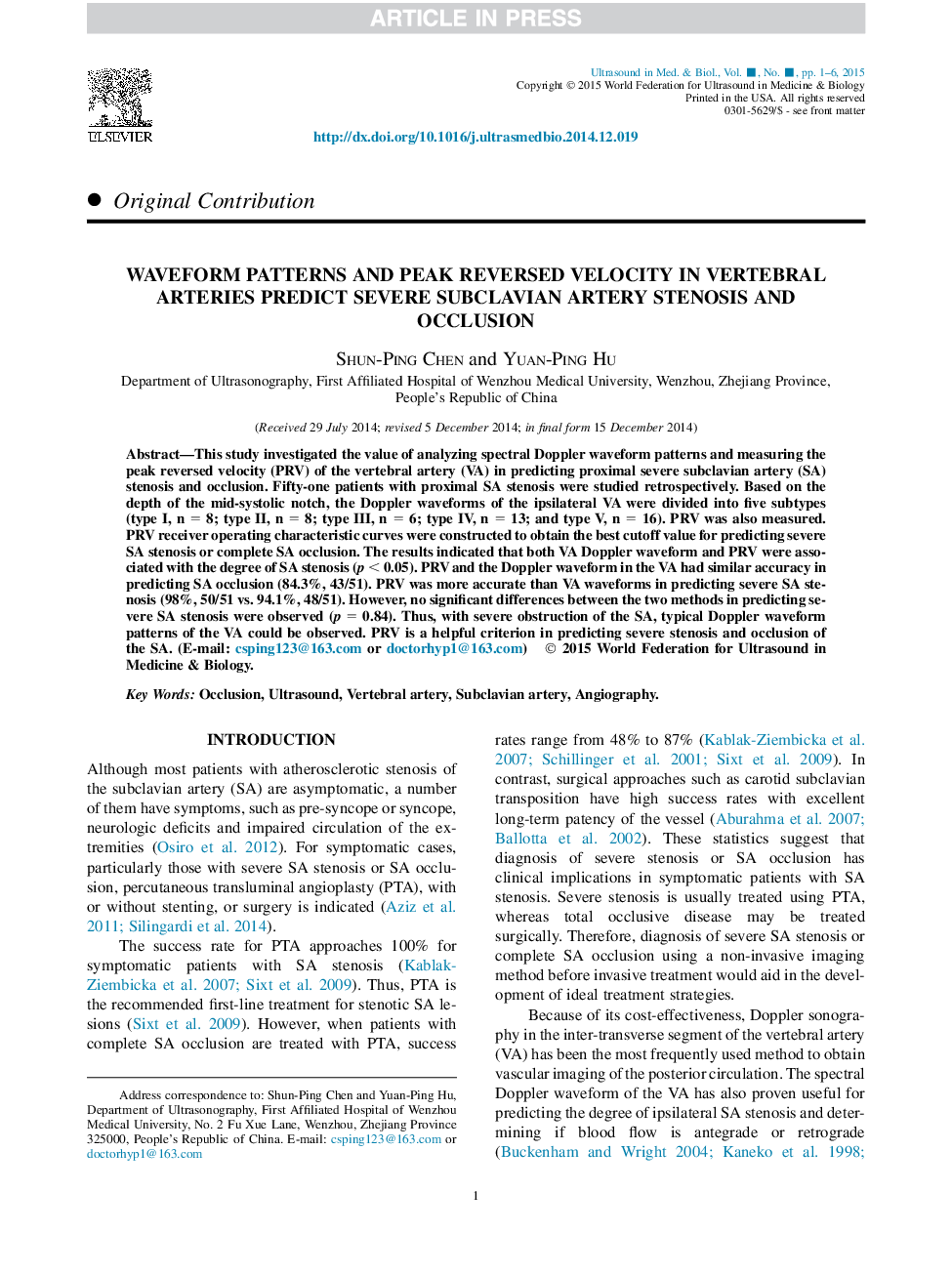| Article ID | Journal | Published Year | Pages | File Type |
|---|---|---|---|---|
| 10691443 | Ultrasound in Medicine & Biology | 2015 | 6 Pages |
Abstract
This study investigated the value of analyzing spectral Doppler waveform patterns and measuring the peak reversed velocity (PRV) of the vertebral artery (VA) in predicting proximal severe subclavian artery (SA) stenosis and occlusion. Fifty-one patients with proximal SA stenosis were studied retrospectively. Based on the depth of the mid-systolic notch, the Doppler waveforms of the ipsilateral VA were divided into five subtypes (type I, n = 8; type II, n = 8; type III, n = 6; type IV, n = 13; and type V, n = 16). PRV was also measured. PRV receiver operating characteristic curves were constructed to obtain the best cutoff value for predicting severe SA stenosis or complete SA occlusion. The results indicated that both VA Doppler waveform and PRV were associated with the degree of SA stenosis (p < 0.05). PRV and the Doppler waveform in the VA had similar accuracy in predicting SA occlusion (84.3%, 43/51). PRV was more accurate than VA waveforms in predicting severe SA stenosis (98%, 50/51 vs. 94.1%, 48/51). However, no significant differences between the two methods in predicting severe SA stenosis were observed (p = 0.84). Thus, with severe obstruction of the SA, typical Doppler waveform patterns of the VA could be observed. PRV is a helpful criterion in predicting severe stenosis and occlusion of the SA.
Related Topics
Physical Sciences and Engineering
Physics and Astronomy
Acoustics and Ultrasonics
Authors
Shun-Ping Chen, Yuan-Ping Hu,
